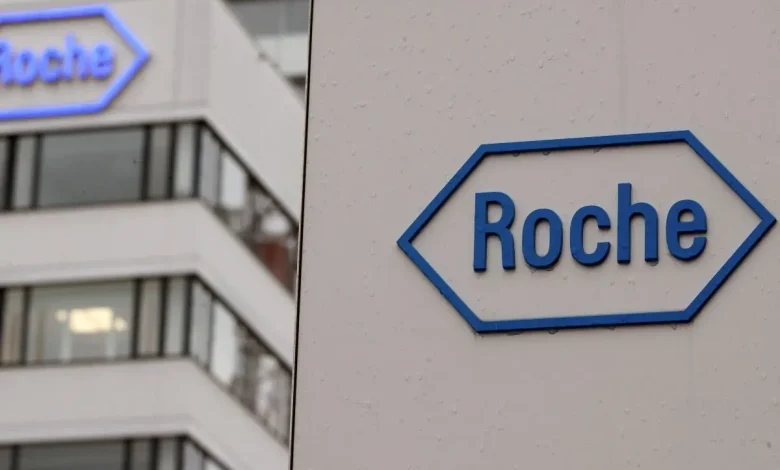Successful Breast Cancer Pill Trial Positions Roche for Stronger Market Growth

Roche, the Swiss pharmaceutical and diagnostics giant, has taken a significant leap forward in its oncology portfolio. The company recently announced highly promising results from a Phase III trial of its investigational oral breast cancer therapy, giredestrant, positioning it for major market growth. This development not only reinforces Roche’s leadership in breast cancer research, but also underscores broader opportunities across key segments of the global oncology market.
Background: The Need for New Breast Cancer Therapies
Breast cancer remains one of the most common and deadly cancers worldwide. Among the subtypes, oestrogen receptor-positive (ER-positive), HER2-negative breast cancer accounts for approximately 70 percent of cases. While standard endocrine therapies (such as aromatase inhibitors or tamoxifen) have dramatically improved outcomes, there remains a substantial risk of recurrence, even after curative-intent surgery. Up to a third of patients eventually relapse following adjuvant endocrine therapy, and many discontinue treatment early due to side effects or tolerability issues.
This gap in efficacy and tolerability underscores an urgent unmet need: safer, better tolerated, and more effective oral therapies that can prevent recurrence and improve long-term outcomes.
Giredestrant: Roche’s Next-Generation SERD
Giredestrant is a selective estrogen receptor degrader (SERD). Unlike traditional endocrine therapies that merely block estrogen signaling, SERDs bind to the estrogen receptor (ER), trigger its degradation, and shut down downstream signaling pathways more robustly. Roche’s version is an oral SERD, making it easier for patients to take compared to older injectable options.
The compound has been under an extensive clinical development program, spanning both early-stage and advanced breast cancer.
The Breakthrough: Phase III lidERA Study
On November 18, 2025, Roche reported positive interim results from its Phase III lidERA Breast Cancer trial (NCT04961996). This was a randomized, open-label, multicenter study that enrolled over 4,100 patients with early-stage (stage I–III) ER-positive, HER2-negative breast cancer. The study compared adjuvant treatment (post-surgery) with giredestrant versus current standard-of-care endocrine therapy.
At the pre-planned interim analysis, the trial met its primary endpoint of invasive disease-free survival (iDFS) — a key measure that reflects recurrence of cancer in the breast or other invasive disease, but excludes unrelated second primaries. Importantly, the improvement was both statistically significant and clinically meaningful, making giredestrant the first oral SERD to show such a benefit in the adjuvant setting.
Moreover, Roche noted a “clear positive trend” in overall survival, though the data are not yet mature. Safety data were favorable: giredestrant was generally well tolerated, with no unexpected adverse events.
Supporting Data from Advanced Breast Cancer
The lidERA results are not Roche’s only strong readout for giredestrant. In its evERA Phase III study (for advanced, metastatic or locally advanced disease), Roche tested giredestrant in combination with everolimus (brand name Afinitor), a well-known mTOR inhibitor, versus standard-of-care endocrine therapy plus everolimus.
The evERA data were compelling:
- In the intention-to-treat (ITT) population, the giredestrant + everolimus regimen reduced the risk of progression or death by 44%.
- In a subgroup of patients harboring ESR1 mutations, which often confer resistance to therapy, the risk reduction was even more pronounced: 62%.
- The safety profile was acceptable, with no fresh safety signals.
These data underscore giredestrant’s potential not just in early, curable disease, but also in later, more treatment-resistant settings where patients have often already received CDK4/6 inhibitors.
Strategic Implications for Roche’s Market Opportunities
The lidERA readout — combined with the evERA data — has significant strategic implications for Roche’s oncology business.
- Shift in Standard of Care
If approved, giredestrant could become a new standard-of-care endocrine therapy in the adjuvant setting for early ER-positive breast cancer. Roche itself described it as “a new endocrine therapy of choice” for early-stage disease, particularly given the unmet need for better tolerated, more effective options. - Lifecycle Extension & Portfolio Differentiation
Roche already has a strong breast cancer portfolio, including established therapies like Herceptin and Perjeta (for HER2-positive disease). Giredestrant would diversify this portfolio into a large, underserved segment (ER-positive, HER2-negative) and deepen its long-term engagement in breast cancer care. - Regulatory Momentum & Competitive Edge
The lidERA success may accelerate regulatory submissions globally, given the strength of the data. Moreover, because giredestrant is an oral SERD, Roche could potentially outcompete injectable SERDs or less potent therapies. The data also come at a time when competition in the SERD space is heating up: other companies are developing similar agents, so Roche’s lead could prove decisive. - Integrated Precision Medicine Strategy
Roche’s strength in diagnostics complements its pharmaceutical business. By pairing its therapeutic innovations (like giredestrant) with diagnostics, the company can more precisely identify patients who will benefit most. This is aligned with Roche’s broader mission of personalized healthcare — using companion diagnostics and predictive biomarkers to tailor treatment. - Boosting Investor Confidence & Pharma Pipeline
For Roche investors, these positive trial results may signal strong future growth in oncology revenues. A successful giredestrant launch could substantially expand Roche’s addressable market in breast cancer. Combined with other pipeline successes, this could also reassure investors about Roche’s long-term innovation capability.
Complementary Pill Success: Itovebi (Inavolisib)
In addition to giredestrant, Roche has delivered another noteworthy success: Itovebi (inavolisib), an oral PI3Kα inhibitor.
In the INAVO120 Phase III trial in PIK3CA-mutated, HR-positive, HER2-negative advanced breast cancer, Roche demonstrated a more than 30% reduction in the risk of death when itovebi was added to a standard regimen (palbociclib + fulvestrant).
Key highlights:
- Median overall survival was 0 months in the itovebi arm, compared with 27.0 months in the control group.
- The combination also delayed the need for chemotherapy by nearly two years, a major quality-of-life outcome.
- Safety remained manageable, with no unexpected toxicities.
- Regulatory momentum is strong: itovebi had already earned Breakthrough Therapy Designation from the FDA in 2024 for its use in PIK3CA-mutated advanced breast cancer.
Together, the successes of giredestrant and itovebi provide Roche with two very strong pillars in its breast cancer pipeline — one targeting ER degradation, and the other targeting a common oncogenic mutation (PIK3CA). This dual approach not only strengthens Roche’s clinical offering but also its commercial potential.
Market Growth Dynamics & Financial Upside
Expanding Market Share in Breast Cancer
Giredestrant’s successful adjuvant results could significantly expand Roche’s footprint in early-stage breast cancer. Since most newly diagnosed breast cancer cases fall into the ER-positive, HER2-negative category, the potential patient population is large. If accepted as a new standard of care, giredestrant could displace or supplement existing endocrine therapies, translating into substantial long-term revenues.
On the advanced disease side, itovebi could further cement Roche’s leadership in PI3K-targeted therapies. Given that PIK3CA mutations occur in approximately 35–40% of HR-positive breast cancers, the eligible patient base is non-trivial.
Synergies with Diagnostics and Companion Tests
Roche’s diagnostic arm is well known for its strength in companion diagnostics. By coordinating its therapy development with diagnostics (e.g., tests for PIK3CA mutations), Roche can create an integrated model that not only identifies patients most likely to benefit, but also accelerates the adoption of its therapies. This offers cost synergies, commercial advantages, and strategic differentiation.
Additionally, Roche recently announced FDA approval for its PATHWAY® HER2 (4B5) test to identify patients with HER2-ultralow metastatic breast cancer. While this is a different segment (HER2-low rather than ER-positive), it underscores Roche’s commitment to precision medicine and its ability to address evolving subtypes of breast cancer via diagnostics + therapy.
Investor Sentiment & Competitive Leverage
The positive lidERA readout and the strong overall survival benefit seen with itovebi are likely to resonate strongly with investors. They signal that Roche’s investing in innovation is paying off — not just in incremental gains, but in potentially practice-changing therapies.
Moreover, the oral SERD space is becoming increasingly competitive. Roche’s leadership with giredestrant could give it a head start versus rivals developing similar agents. If approved, Roche may benefit from first-mover advantages such as physician adoption, market share, and pricing power.
Challenges & Risks
No development is without risks. Here are some potential challenges Roche may face in translating this clinical success into commercial success:
- Regulatory Hurdles: While the interim lidERA results are strong, full data (especially longer-term overall survival) will be critical for regulatory approval. Regulatory agencies may demand more follow-up or additional trials.
- Safety and Tolerability: Though giredestrant was well tolerated in the trial, long-term safety in a large, real-world population remains to be seen. Unexpected side effects could emerge once millions of patients potentially start using the drug.
- Competition: Other pharmaceutical companies are also developing oral SERDs and targeted therapies. Roche will need to maintain its lead in efficacy, safety, and market positioning to fend off rivals.
- Reimbursement and Pricing: High-cost novel therapies face pressure from healthcare payers. Roche will need to demonstrate cost-effectiveness — in terms of reducing recurrence, delaying progression, and improving quality of life — to justify premium pricing.
- Adoption & Physician Behavior: Switching from well-established endocrine therapies to a new oral SERD requires physician education, guidelines updates, and convincing data. Some doctors may be cautious in switching until long-term data accumulate.
Broader Implications for Breast Cancer Treatment
Roche’s successes reflect a broader shift in breast cancer therapy:
- The development of oral SERDs like giredestrant could redefine adjuvant hormone therapy, offering patients more convenient and potentially more effective options than current treatments.
- Targeted therapies based on genomic biomarkers (like PIK3CA) are paving the way for more personalized approaches in metastatic disease. Itovebi’s survival benefit is a prime example of this trend.
- The integration of diagnostics with therapeutics is becoming more central than ever. Roche’s dual business model (pharma + diagnostics) gives it a structural advantage in this new precision-medicine era.
Outlook: What’s Next for Roche
Looking ahead, Roche will likely pursue the following key steps:
- Regulatory Submissions: Roche is expected to file giredestrant data with regulatory authorities globally (e.g., FDA, EMA), aiming for approval as a standard adjuvant therapy.
- Presentation to Medical Community: The lidERA data will be shared at upcoming scientific meetings, helping build clinical consensus.
- Post-Marketing Planning: Assuming approval, Roche will likely plan large-scale market rollouts, potentially working with payers, oncologists, and patient advocacy groups to ensure access.
- Further Trials & Indications: Roche’s giredestrant program already includes multiple ongoing studies (e.g., in other settings or combinations).
- Diagnostic Strategy: Roche will continue to develop or refine companion diagnostic tests to identify which patients benefit most — both for giredestrant and other therapy lines.
Conclusion
Roche’s recent success with its breast cancer pill giredestrant marks a watershed moment for the company’s oncology business. The lidERA Phase III trial demonstrated, for the first time, that an oral SERD can significantly improve invasive disease-free survival in early-stage ER-positive breast cancer — a major unmet need. Coupled with competitive data in the metastatic setting (evERA) and a complementary targeted therapy in itovebi (inavolisib), Roche is strategically well-positioned for strong future market growth.
These developments not only reinforce Roche’s scientific leadership, but also reflect broader trends in oncology: the rise of oral targeted therapies, the increasing role of precision medicine, and the growing integration of diagnostics and therapeutics. If Roche successfully translates these trials into approved therapies, it stands to reshape the standard of care in breast cancer — with potentially transformative benefits for patients and substantial value for shareholders.




